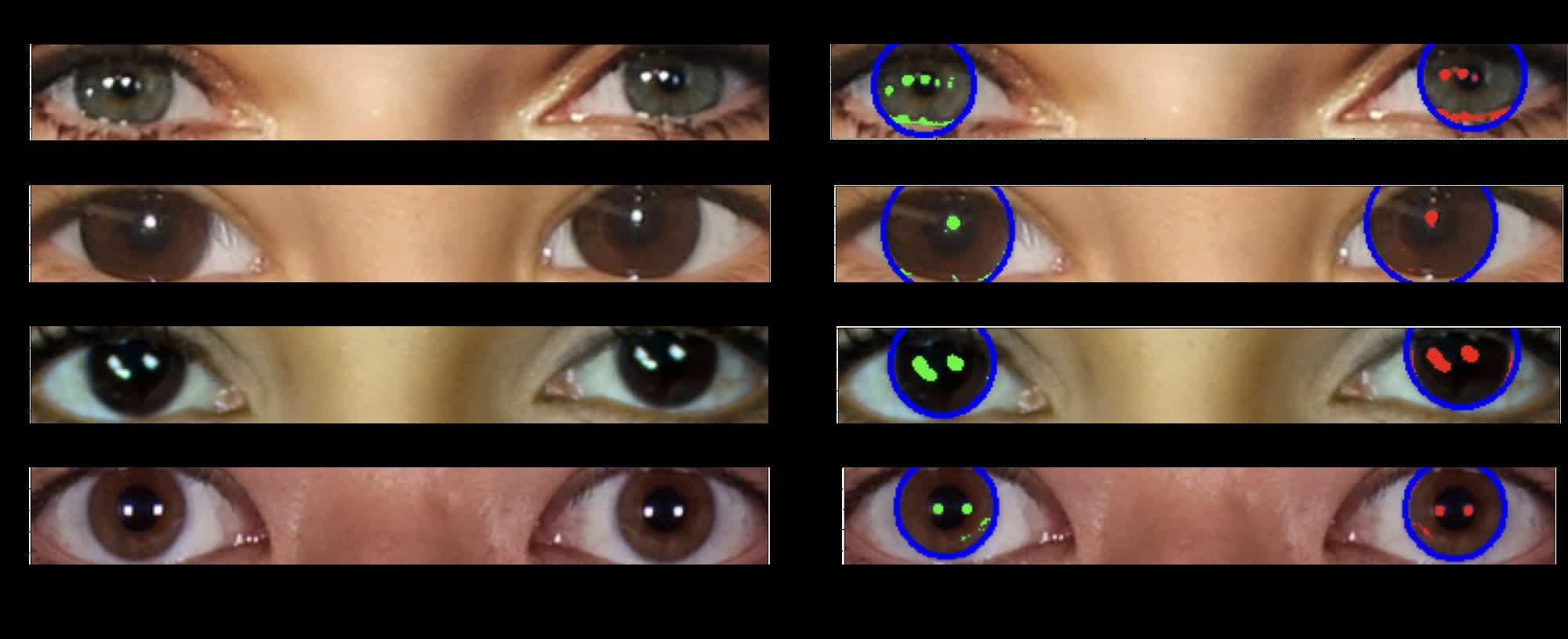Mirrors to the soul: In only a few years, up to date generative AI techniques have come a great distance in creating realistic-looking people. Eyes and arms are its most vital obstacles. Nonetheless, fashions like Secure Diffusion are getting proficient at producing people that, if not good, are at the least straightforward to edit, which has sparked issues about misuse.
Researchers on the College of Hull have not too long ago revealed a groundbreaking technique to determine AI-generated deepfake pictures by analyzing reflections in human eyes. Final week, the workforce unveiled the method on the Royal Astronomical Society’s Nationwide Astronomy Assembly. The tactic employs instruments utilized by astronomers to review galaxies to look at the consistency of sunshine reflections in eyeballs.
Adejumoke Owolabi, an MS scholar on the College of Hull, led the analysis workforce supervised by Astrophysics Professor Dr. Kevin Pimbblet.
The detection method works on the precept {that a} pair of eyeballs will mirror mild sources equally. The position and form of sunshine reflections is constant in each eyes in real pictures. In contrast, many AI-generated pictures do not account for this, resulting in misplaced and oddly formed reflections between the eyes.
The astronomy-based strategy to deepfake detection may appear extreme since even an off-the-cuff photograph evaluation can reveal inconsistencies in eye reflections. Nonetheless, utilizing astronomy instruments to automate the measurement and quantification of the reflections is a novel development that may affirm suspicions, probably offering dependable authorized proof of fraud.
Pimbblet defined that Owolabi’s method mechanically detects eyeball reflections and runs their morphological options via indices to match the similarity between the left and proper eyeballs. Their findings confirmed that deepfakes usually exhibit variations between the pair of eyes.
The researchers pulled ideas from astronomy to quantify and examine eyeball reflections. For instance, they’ll assess the uniformity of reflections throughout eye pixels utilizing the Gini coefficient, usually used to measure mild distribution in galaxy pictures. A Gini worth nearer to 0 signifies evenly distributed mild, whereas a worth nearing 1 suggests concentrated mild in a single pixel.
“To measure the shapes of galaxies, we analyze whether or not they’re centrally compact, whether or not they’re symmetric, and the way clean they’re. We analyze the sunshine distribution,” Pimbblet defined.
The workforce additionally explored utilizing CAS parameters (focus, asymmetry, smoothness), one other astronomy software for measuring galactic mild distribution. Nonetheless, this technique was much less efficient in figuring out faux eyes.
Whereas the eye-reflection method reveals promise, it is probably not foolproof if AI fashions evolve to include bodily correct eye reflections. It appears inevitable that GenAI creators will appropriate these imperfections in time. The tactic additionally requires a transparent, up-close view of eyeballs to be efficient.
“There are false positives and false negatives; it is not going to get every thing,” Pimbblet cautioned. “However this technique gives us with a foundation, a plan of assault, within the arms race to detect deepfakes.”
Picture credit score: Adejumoke Owolabi




